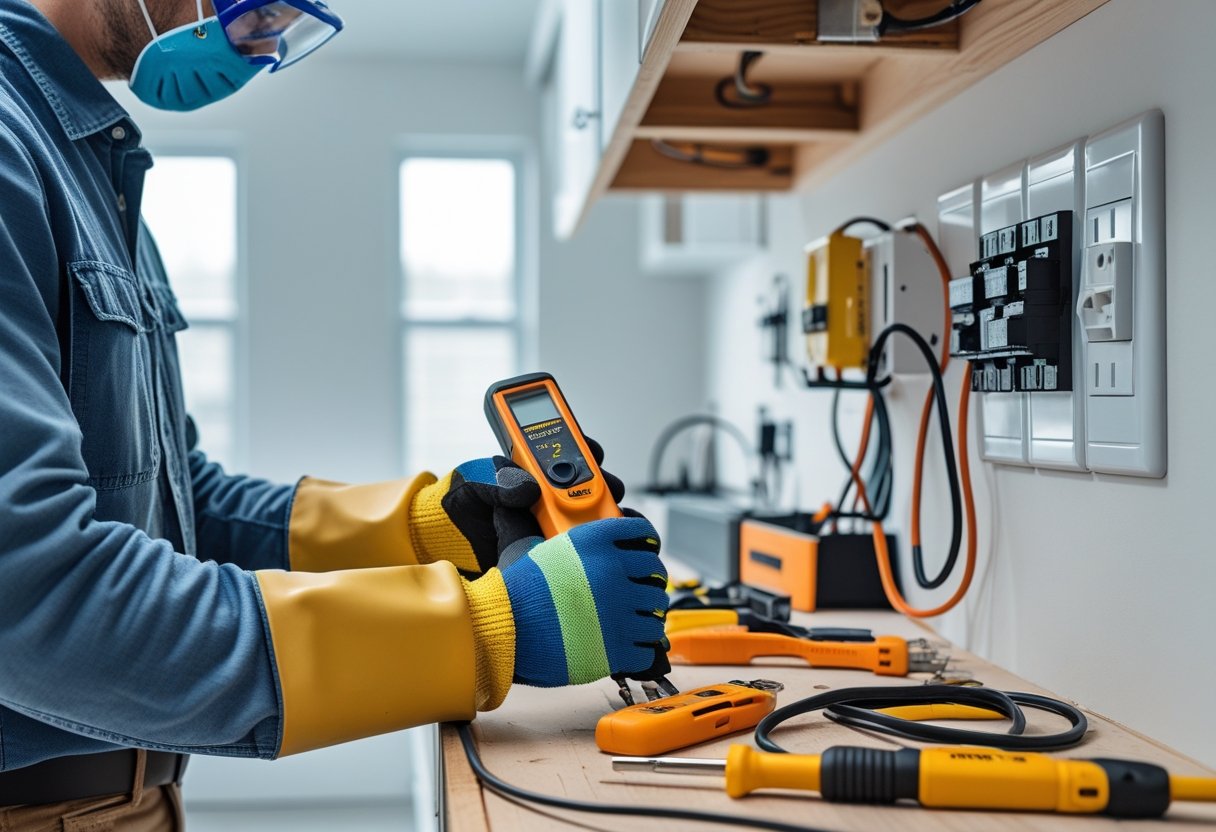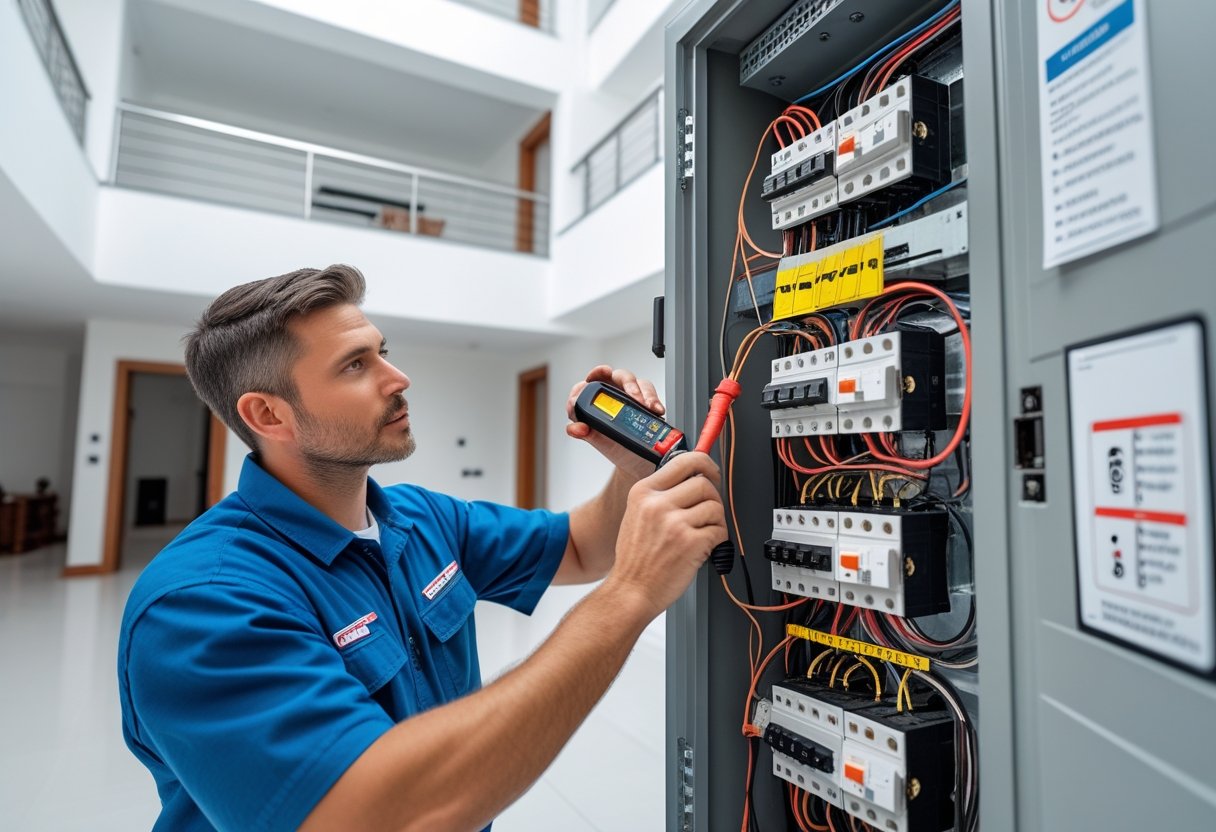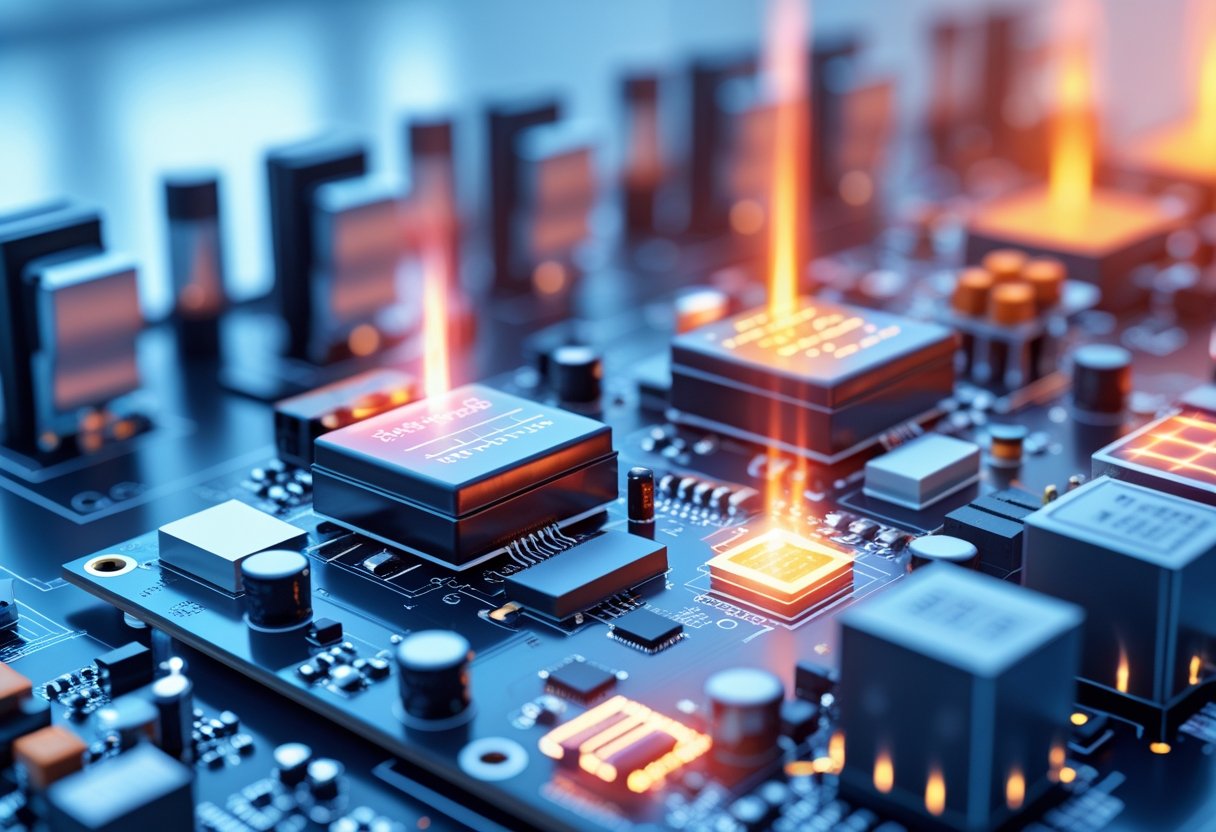Installing a generator transfer switch is a crucial step for ensuring that your home can safely use backup power during outages. The average installation cost for a generator transfer switch ranges from $400 to $2,500 depending on various factors such as the type of switch and the complexity of the installation. Understanding these costs can help you make informed decisions about your backup power needs.
For homeowners in the Sacramento area, choosing a skilled electrician will ensure that your generator transfer switch is installed safely and efficiently. At AAA Electrical Services, we bring over 42 years of electrical expertise, providing tailored services designed with your family’s safety in mind. Whether you need a straightforward installation or additional electrical services, our licensed technicians are ready to assist you.
Investing in a generator transfer switch not only enhances your home's resilience against power outages but also contributes to your peace of mind. With flat-rate pricing and same-day service options available, you can trust AAA Electrical Services to handle your installation with care and professionalism.
What Is a Generator Transfer Switch?
A generator transfer switch is an essential component for safely connecting your backup generator to your home’s electrical system. It allows you to transfer power during outages while protecting both your home and the utility grid. Understanding the types, workings, and requirements of transfer switches can help ensure a reliable power source when you need it most.
Types of Transfer Switches
There are two primary types of transfer switches: manual and automatic. A manual transfer switch requires you to physically switch the power source from utility to generator during an outage. These typically cost between $300 and $1,000, excluding installation.
In contrast, an automatic transfer switch (ATS) detects power outages automatically and switches the supply to the generator without user intervention. This type offers convenience, especially for whole-house generators, but generally comes at a higher price, ranging from $500 to $2,500.
When choosing a transfer switch, it’s crucial to consider the number of circuits it will control, such as a 6-circuit or 10-circuit transfer switch, to match your specific power needs.
How Transfer Switches Work
Transfer switches function by isolating your home’s electrical system from the utility lines. When a power outage occurs, the switch cuts off the incoming utility supply, allowing your generator to seamlessly take over.
In a manual transfer switch, you must be present to make the switch. For an ATS, this process is automatic, ensuring a continuous power supply. Installing the switch typically involves connection to your electrical panel, ensuring that essential circuits remain powered during outages, while protecting against back-feeding into the grid.
With proper installation, a generator transfer switch can significantly enhance your home’s safety during power outages.
Essential Circuits and Amp Requirements
Determining which circuits are essential during a power outage is vital when choosing a transfer switch. Essential circuits often include lighting, refrigeration, and heating systems. Understanding your amp requirements will help ensure that your generator and transfer switch work in harmony.
Most smaller portable generators are rated at 30 or 50 amps, while larger standby systems can handle 100 to 200 amps or more. Be sure to assess your power needs against your generator's capacity and the maximum load of the transfer switch.
AAA Electrical Services can assist you in identifying essential circuits and ensuring that your home is ready for any power outage.
Factors That Influence Installation Cost
Several elements impact the overall cost of installing a generator transfer switch. These factors include the type of transfer switch, labor expenses, the necessity for permits, and any additional components required for the installation.
Transfer Switch Cost Breakdown
The cost of the transfer switch itself is a significant factor in the installation price. A manual transfer switch typically ranges from $300 to $900, depending on size and specifications. Automatic transfer switches can be more expensive, often costing between $1,200 and $1,600. You may also consider purchasing transfer switch kits that include all necessary components, which can streamline the process but vary in price based on the included features. For a 10-circuit transfer switch, prices may start around $500, reflecting added complexity and functionality.
Labor and Professional Installation
Labor costs significantly influence the total installation price. Hiring a professional electrician might cost you between $70 and $120 per hour, varying by experience and local rates. The complexity of the installation also plays a critical role—simple installations may take around four hours, while intricate setups could extend the duration and, consequently, the labor costs. Choosing a qualified electrician ensures adherence to electrical codes, which safeguards your home and enhances safety.
Permits and Inspections
In many locations, obtaining the necessary permits for installation is essential. These permits ensure that your installation complies with local electrical codes. The cost for permits can range from $50 to several hundred dollars, depending on your area and the scope of the project. In addition, some areas may require inspections after installation, which can add further costs. These steps, while adding to the initial expenditure, are crucial for maintaining safety and compliance with legal standards.
Additional Components and Accessories
The addition of components such as an inlet box or extra wiring can also impact your overall costs. An inlet box, which allows for a convenient connection between your generator and the house, typically ranges from $100 to $300. If you need to backfeed power during an outage, you might require specific accessories that further increase material costs. Consider these factors when budgeting for your generator transfer switch installation, as they could lead to increased costs if not anticipated.
For reliable and safe installation in the Sacramento area, consider contacting AAA Electrical Services. With a commitment to family safety and transparent pricing, you can trust their experienced team to handle everything from circuit installations to inspections.
Installation Process for Generator Transfer Switches
Understanding the installation process for generator transfer switches is essential for ensuring seamless power supply during outages. You can choose between professional installation or DIY options, both of which have their own considerations and steps.
Professional vs. DIY Installation
When selecting installation methods, decide whether to hire a professional or do it yourself. Professional installation ensures compliance with electrical codes and safety standards. Electricians have the expertise to handle complex tasks and provide peace of mind.
The cost for professional installation typically falls between $500 and $1,500, including labor and materials. While DIY installation may save you money, it's crucial to understand the risks, including improper handling of electrical systems. Hiring AAA Electrical Services can give you confidence, as trained technicians prioritize your family’s safety with tailored solutions.
Step-by-Step Installation Overview
The installation of a generator transfer switch involves several critical steps.
- Assess Your Needs: Determine the right type of generator and transfer switch based on your home’s power requirements.
- Turn Off Power: Ensure the main electrical grid power is off to avoid backfeeding, which can cause severe hazards.
- Mount the Transfer Switch: Install the switch near your electrical panel, ensuring it's accessible.
- Connect to Electrical Panel: Run wires from the switch to your electrical panel. Follow electrical codes carefully to ensure compliance.
- Connect the Generator: Install a dedicated outlet for your generator, using heavy-duty wiring to handle the load.
- Test: Once installed, test the system to ensure it functions correctly. This step verifies that the switch operates smoothly without power surges.
Safety Considerations and Electrical Codes
Safety cannot be overstated when installing a generator transfer switch. Always adhere to electrical codes that govern your area, ensuring the installation is up to standard.
Inadequate wiring or improper grounding can lead to dangerous conditions. It's essential to use properly rated materials and follow all guidelines.
Be aware of the risks of backfeeding, which can put linemen at risk during power restoration. Working with a licensed electrician from AAA Electrical Services guarantees compliance with safety measures, transparent pricing, and expert advice tailored to your needs.
Maintaining your family’s safety and reliability of your power supply begins with proper installation.
Cost Comparison for Different Setups
When considering the installation of a generator transfer switch, understanding the cost differences across setups is essential. This section breaks down the financial implications of portable versus standby generators, the choice between interlock kits and transfer switches, and the cost of wiring a generator directly to your home.
Portable vs. Standby Generator Transfer Switches
Portable generators typically require a manual transfer switch, which costs between $200 and $800. These switches enable manual control over which circuits receive power during an outage. On the other hand, standby generators need an automatic transfer switch, priced between $400 and $2,000 depending on the type and complexity of the installation.
For instance, a portable generator is sufficient for powering essential circuits like lights and refrigerators during short outages. This setup costs less but requires more user intervention. In contrast, standby generators provide seamless operation with automatic transfer during outages, ensuring your home remains powered without effort.
Choosing between these options depends on your budget and your family's needs, particularly during prolonged outages.
Interlock Kits vs. Transfer Switches
Generator interlock kits present a cost-effective alternative to traditional transfer switches. The cost to install an interlock kit generally ranges from $250 to $1,100, making it a budget-friendly option for homeowners. These kits work by locking out the main circuit breaker, ensuring that the generator and utility power cannot operate simultaneously, thus enhancing safety.
In comparison, transfer switches, which often cost between $500 and $2,800 when factoring in installation, offer more extensive capabilities, including automatic switching for multiple circuits. Choosing an interlock kit is ideal for those looking for a simple solution to power select circuits. However, for comprehensive coverage, especially in larger homes, investing in a transfer switch may be the better choice.
Wiring a Generator Directly to the House
Wiring a generator directly to your home's electrical panel is a more customized and potentially costly solution. The cost to wire a generator to the house can vary significantly depending on your home's layout and the complexity of the installation. Generally, you can expect to spend from $500 to $3,000 for this service.
This option usually involves a qualified electrician who will ensure all wiring complies with local codes and safety standards. You’ll want to prioritize having a licensed and experienced technician handle the task. AAA Electrical Services strongly recommends opting for professional installation to avoid hazards and ensure that your home enjoys a reliable backup power solution.
In each setup, balancing your investment with your power needs is key to making an informed decision.
Popular Brands and Products
Choosing the right generator transfer switch involves understanding various brands and product options available in the market. This section will cover leading manufacturers and key considerations for selecting the right transfer switch to meet your needs.
Overview of Leading Manufacturers
Generac is one of the most recognized names in the generator transfer switch market. They offer a wide range of products, including both manual and automatic transfer switches. Their switches come with varying amp ratings, catering to different household needs.
Reliance Controls is another notable manufacturer known for its reliability and ease of installation. Their transfer switch kits often include all necessary components for straightforward setup, making them popular among homeowners.
When considering brand options, also look for quality, customer reviews, and warranty offerings. Many brands focus on safety features and user-friendly designs to enhance your peace of mind during power outages.
Selecting the Right Transfer Switch
When selecting a transfer switch, consider whether you want a manual or automatic model. Manual switches are typically less expensive and require manual operation, whereas automatic switches provide seamless power transfer but come at a higher price.
The cost of transfer switches can range from $200 to $1,600, depending on the brand, type, and features. Investing in a reputable brand ensures durability and efficiency, aligning with your safety priorities.
For tailored solutions in Sacramento and surrounding areas, consider consulting AAA Electrical Services. Their experienced technicians can guide you in selecting the best transfer switch based on your specific electrical needs.
Frequently Asked Questions
When considering the installation of a generator transfer switch, various aspects such as costs, installation steps, and permit requirements are essential. This section addresses common inquiries to provide you with clear answers and guidance.
How much does it typically cost to have a professional install a generator transfer switch?
The cost for professional installation usually ranges from $400 to $2,800, depending on the type of transfer switch and labor involved. A manual transfer switch installation falls between $400 to $1,300, while automatic switches can be priced from $500 to $1,800. Hiring an experienced technician ensures the work meets safety standards.
What are the necessary steps involved in installing a manual transfer switch for a generator?
Installing a manual transfer switch generally includes identifying the appropriate location, ensuring the generator is powered off, and disconnecting the main power supply. The electrician will then connect the transfer switch to both the electrical panel and the generator. Finally, proper testing ensures everything operates smoothly.
Can a homeowner install an interlock kit for a generator, or does it require a professional electrician?
Homeowners may install an interlock kit if they have electrical knowledge and experience. However, hiring a licensed electrician, like those from AAA Electrical Services, is advisable for safety and compliance with local codes. Professionals can ensure proper installation and functionality, significantly reducing safety risks.
Is a permit required for generator transfer switch installation, and if so, what does the process entail?
Many jurisdictions require a permit for installing a generator transfer switch. The process often involves submitting an application to your local building department and paying a fee. An inspector may also need to verify the installation to ensure it meets safety standards.
How does the cost of installing an interlock kit compare to a traditional transfer switch?
The cost to install an interlock kit typically ranges from $200 to $500, which can be less than some manual transfer switches. However, the final price will depend on the complexity of the installation and any necessary adjustments within your electrical panel.
What factors affect the overall cost of installing a 50 amp generator outlet and associated transfer switch?
Several factors influence the cost of installing a 50 amp generator outlet. These include the type of transfer switch, the complexity of the installation, local labor rates, and any necessary permit fees. Additionally, the distance from the generator to the electrical panel can affect wiring costs.





